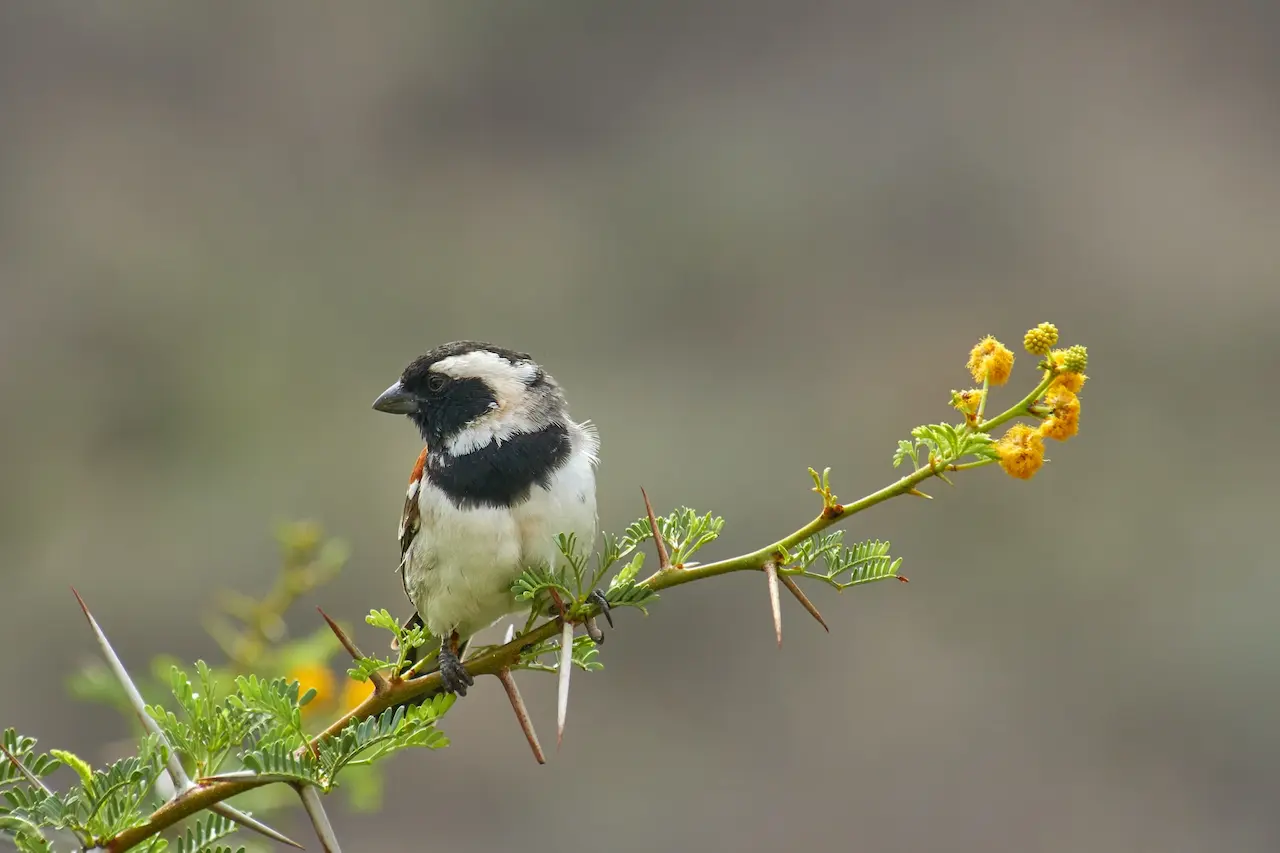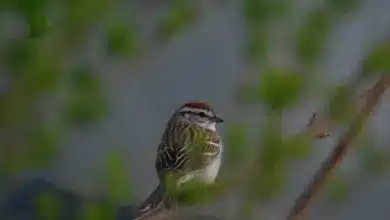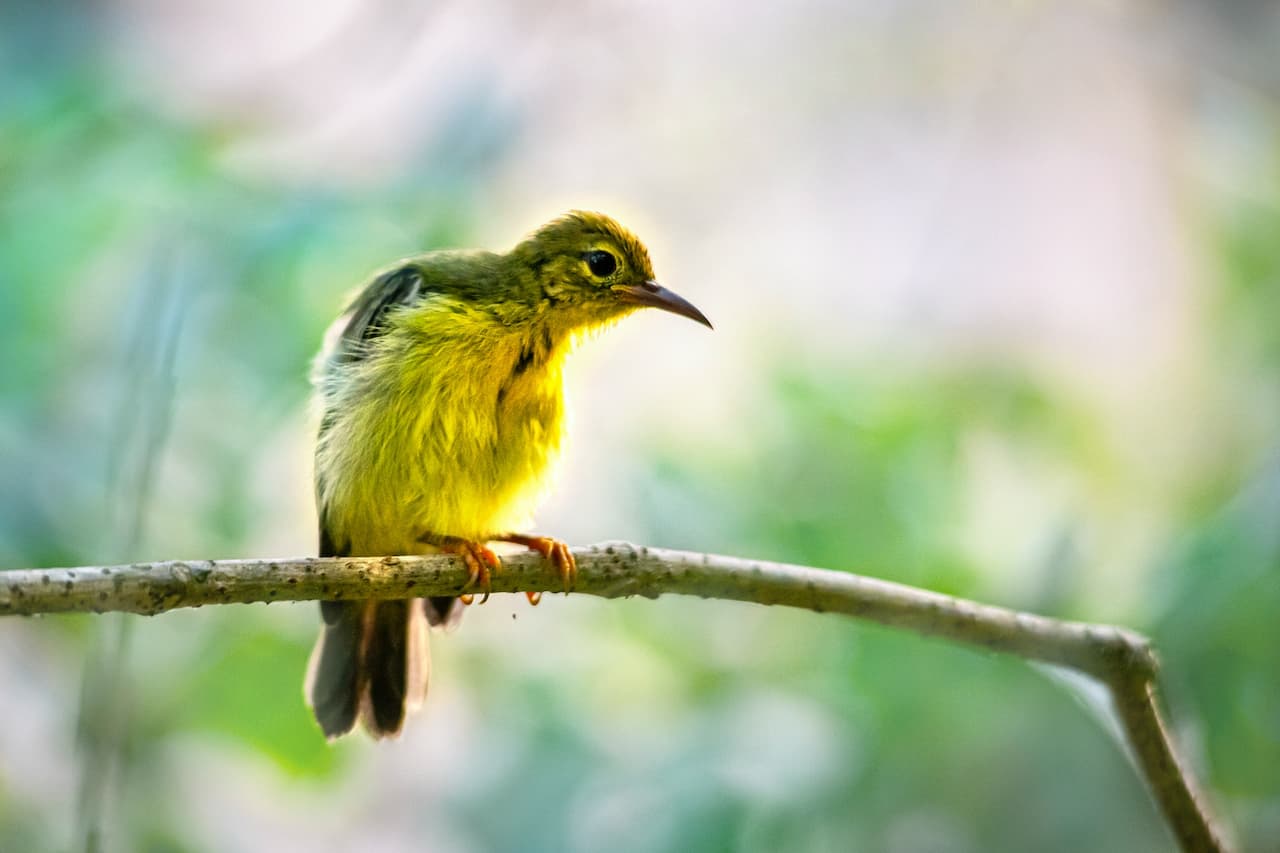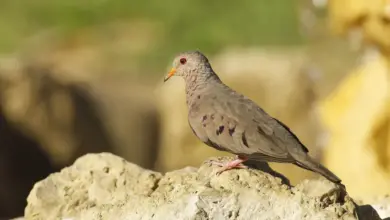Samoa Parrot Finches or Pink-billed Parrotfinches
Parrotfinch Information … Parrotfinch Photo Gallery … Parrotfinch Species
Common Health Problems of Finches … Finch / Canary Food
Samoa Parrot Finches or Pink-billed Parrotfinches, Erythrura cyaneovirens cyaneovirens, occur naturally on the island of Viti Levu in Fiji, where it is found at mid-height along tree-trunks and branches, usually alone or in pairs. They frequently join mixed-species flocks foraging for food – which is primarily insects, but also includes flower buds and fruits.
Several sub-species have been identified:
-
- Seed-eating Royal Parrotfinch aka Red-headed Parrotfinch, Erythrura cyaneovirens serena
- Aneitemn Island, New Hebrides … Identification: Green back and abdomen
- Seed-eating Royal Parrotfinch aka Red-headed Parrotfinch, Erythrura cyaneovirens serena
-
- Red-headed Parrotfinch (no other name known), Erythrura cyaneovirens efatensis
- Common on Efate … Identification: Green back and a dark red head.
- Red-headed Parrotfinch (no other name known), Erythrura cyaneovirens efatensis
-
- Red-headed Parrotfinch (no other name known), Erythrura cyaneovirens gaughrani
- Endemic to Western Samoa … Identification: Has a duller blue neck.
- Red-headed Parrotfinch (no other name known), Erythrura cyaneovirens gaughrani
-
- Peale Parrot Finch or Fiji Parrotfinch, Erythrura cyaneovirens peali (featured above)
- Common in Fiji
- Peale Parrot Finch or Fiji Parrotfinch, Erythrura cyaneovirens peali (featured above)
- Royal Parrotfinch, Erythrura cyaneovirens regia
- Endemic to Vanuatu.
Description:
Size: Averages 11 cm in length.
Plumage:
They have a red head, a blue back and chest which gradually merges to green. The hen is duller in coloration and the males have a clear change to the head color on the back of the neck.
Bill:
This species has an over-sized bill compared to its size, and is easily recognized by its large, glossy-pink bill.
Identification:
They look similar to the Royal Parrot Finch, but the Samoa has a greener back and the blue coloration is paler. Also the Royal Parrotfinch has a stronger beak.
They are larger in size than the Peale’s Parrot Finch.
Call / Vocalization:
It has high-pitched chee-chee voice and a clicking sound.
Personality / Behavior:
These finches love water. One can frequently see them jump in and out of their bathing dishes. Bathing will take place a couple of times a day, summer or winter – and are an important part of their daily grooming.
Another characteristic of the parrotfinches is their almost semi-nocturnal nature. They are always last to roost at night, and can be seen still on the food station or darting around the aviary after dark. They are also the first to stir in the morning.
Aviculture:
Aviary Requirements:
This breed is totally vivacious, very energetic, and always on the move. They are very gentle, which makes them an ideal choice for a mixed, large and well-planted aviary. They need plenty of flight space. A good aviary dimension would be 8ft. long x 7ft. wide. However, an aviary can never be too big for these active finches.
The two factors that seem to be very important for this finch species is the provision of a spacious aviary (more important than with other parrotfinch species) – some sub-species may also require figs as part of their daily diet.
This parrotfinch species has been successfully bred in captivity and the incubation period and the independence age of the young is identical to that of the other members of the red-headed family. The exception being that the young birds only obtain their full color at 20 months – while other parrotfinches obtain it at or before 12 months of age.
This tropical species needs to be protected from the elements. During the winter months, they need to have access to a heated shelter. The outside flight needs to have some draft protection. One way would be to install slotted tracking on the sides of the aviary that will allow you to slide in either Perspex or Polycarb sheets during the winter months to keep out chilly winds and help keep some heat in. Alternatively, such panels can be hung up along the sides – as long as they are firmly installed.
It is recommended to provide some cover within the aviary, which can be achieved by planting bushes suitable to your area, or alternatively putting up appropriate brush, which even when dry seems to provide cover adequate for their needs.
Over time the breed has adapted well to cooler climates. However, when purchasing birds from a breeder find out whether the breeder uses artificial heating sources. It takes time for birds to acclimatize to your local temperature and conditions.
The pair bonding of the adult birds is very strong, and in the aviary they are seldom seen apart. However, should either one die, a new partner should be introduced as soon as possible.
It is always advisable to have more hens in your colony than male birds, as it minimizes the potential conflict between males. Having said all that, give them food, water, and nesting material, and they are likely to thrive and breed. If within your aviary, you have the facility to grow a seeding grass, then you are guaranteeing yourself a happy flock of parrot finches.
Breeding:
In their natural habitat breeding season starts in September with the building of a big nest of grasseshigh in the trees. In captivity the breeding season will be dictated by the climate and length of the days.
They usually produce clutches of 3-4 eggs which are incubated for about for 14 days. Two nests during a season are normal.
Captive Breeding / Aviculture
Diet:
In their natural habitat, they eat mainly a wide range of fruits. Some sub-species may also require figs as part of their daily diet.
A good-quality seed mix should be provided, as well as seeding grasses, various greens and live food – especially during the breeding season. They readily accept fresh fruits / veggies a lot, and greens such as parsley and dandelions. You can get a lot of free “green stuff” (safe, untreated plants please!) from your own garden to feed to them with.
Sprouted or germinated seeds are usually more easily accepted by “seed addicts” than fresh fruits and vegetables.
- Sprouted seeds are healthier as the sprouting changes and enhances the nutritional quality and value of seeds and grains. Sprouted seeds are lower in fat, as the process of sprouting utilizes the fat in the seed to start the growing process – thus reducing the fat stored in the seeds.
- Sprouted seeds will help balance your bird’s diet by adding a nutritious supply of high in vegetable proteins, vitamins, minerals, enzymes, and chlorophyll.
- Soaked and germinated “oil” seeds, like niger and rape seeds, are rich in protein and carbohydrates; while “starch” seeds, such as canary and millets, are rich in carbohydrates, but lower in protein.
- It is an invaluable food at all times; however, it is especially important for breeding or molting birds. Sprouted seeds also serve as a great rearing and weaning food as the softened shell is easier to break by chicks and gets them used to the texture of seeds.
While raising young, breeders often offer additional food items to the parents, such as hard-boiled eggs (potentially enriched with vitamins and minerals – if the diet is less than balanced), as well as sprouted seeds, and mealworms.
The fledglings readily accept live food, such as mealworms. They will take literally any size worm, and if too big to take at once, they will suck the pulp out of the worm. Green food, on the other hand, takes them about two weeks before they accept it. But once they have gotten used to live food, their appetite is fairly insatiable. Sprouted seed are readily accepted by birds and are highly nutritious. They make an excellent weaning food..
As with all other breeds, fresh water should be available at all times.
Finch Diet / Dietary recommendations to maintain optimal health in finches.
Specific Health Concerns:
As these finches spend a lot of time foraging on the ground, breeders can expect to have to deal with a worm burden. Some breeders suggest that these finches do not respond well to worming, while others suggest the following protocol: “Mix 80 mils of water, 1.5 mils of Avitrol Plus, 2.0 mils of strawberry topping. The strawberry topping seems to make it more palatable without affecting the efficacy of product. Use your own judgment on whether or how often to administer. In most cases, 3 or 4 times a year seems appropriate, particularly if you are feeding live food. “
Whether or not such a routine is advisable for your own birds should be discussed with your vet.
Please Note: The articles or images on this page are the sole property of the authors or photographers. Please contact them directly with respect to any copyright or licensing questions. Thank you.




